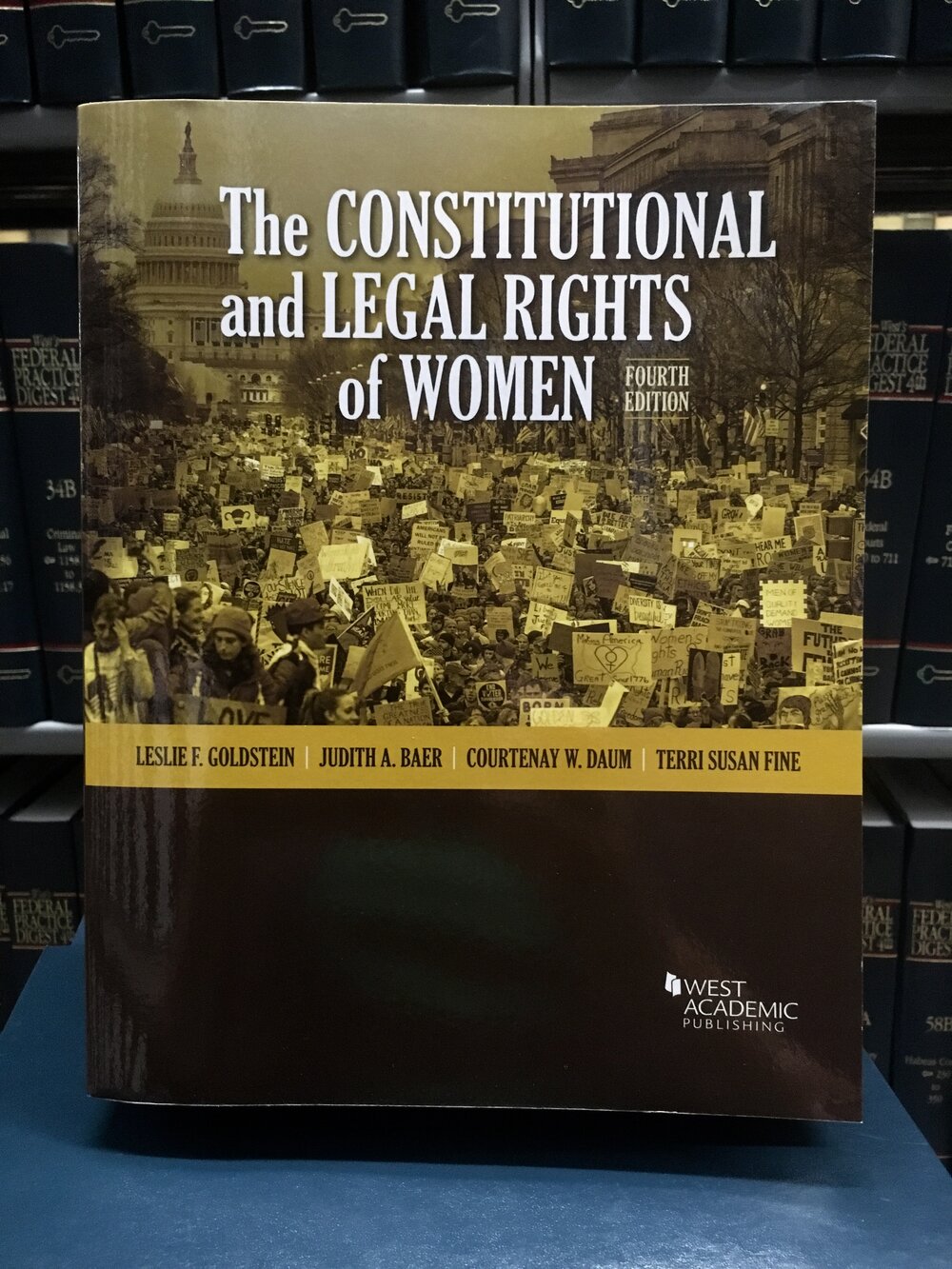Originally published by Lori-Ann Craig.

By Leslie F. Goldstein, Judith A. Baer, Courtenay W. Daum, & Terri Susan Fine
Published by West Academic Publishing
KF 4758 .A7 G66 2019
Photo Credit: Jessica King
On August 26, 1920, the ratification of the Nineteenth Amendment was certified, and women were assured the right to vote. The passage of this amendment marked the culmination of a women’s rights movement that began nearly a century before with the abolitionist movement. The feminist movement really gained traction with the Women’s Rights Convention in 1848, twenty years before the passage of the Fourteenth Amendment. It is in this era that The Constitutional and Legal Rights of Women begins its analysis of the evolution of women’s rights and the judicial doctrines that shape the laws affecting women.
From the first case challenging a sex-based classification (Bradwell v. Illinois) to a 2017 case challenging different residency requirements for conferring citizenship (Sessions v. Morales-Santana), the authors examine women’s quest for constitutional equality. They discuss the constitutional and legal rights afforded women in the workplace and look at issues such as Title VII and gender discrimination, equal pay, and the worker as mother. How the courts have handled a women’s right to reproductive freedom provides the backdrop for an enlightening discussion on the evolution of the right to privacy, a right not specifically enumerated in the Constitution but which forms the basis of many freedoms that the Supreme Court has inferred from the spirit of the law, including the right to contraception and the right to abortions. In the same vein as a woman’s right to reproductive freedom is an individual’s right to marry the person of his/her choice, regardless of sex or gender. Both are extensions of the implied right to privacy.
Another area in which women were traditionally denied rights was that of education. Here, the authors talk about Title IX and its application to educational equality and how it relates to sexual harassment, retaliation, and gender identity.
The authors round out the book with a discussion of women and crime. This section is not a discussion of the Roxies and Velmas, who entertained us from their cell blocks in Chicago the Musical but rather the focus is upon sex bias and how crimes are defined and prosecuted. From spousal abuse and marital rape to the Violence Against Women Act, the authors look at how the laws have changed as a result of feminist efforts.
As we approach the centennial of the ratification of the Nineteenth Amendment, it is a good idea to look back and see how women have gotten to where they are today and how much further they have to go.
Curated by Texas Bar Today. Follow us on Twitter @texasbartoday.
from Texas Bar Today https://ift.tt/2RlozcD
via Abogado Aly Website
No comments:
Post a Comment